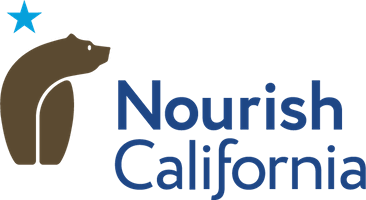1.11.2016 On January 7, Governor Brown proposed spending $122.6 billion for California’s 2016-2017 state budget. Despite a forecast of billions of dollars in additional revenues over the past few years, the Governor’s budget proposal still does not do enough to restore years of cuts to California’s safety-net programs or to reduce poverty in California. The Governor remains focused on limited spending, paying down debt, and saving for the rainy day fund.
Although the state economy continues to rebound, economic recovery has been uneven. Nearly a quarter of Californians live in poverty and at least 4 million continue to struggle with food insecurity. The Governor’s proposed budget states the need to counteract the effects of poverty, but the proposal falls short on investments to significantly reduce poverty and hunger.
The proposal sets aside $3.1 billion of 2016-17 revenues, split between the state’s rainy day fund and payment toward state debts, as required by 2014’s Proposition 2. However, the Governor also proposes to deposit an additional $2 billion in the rainy day fund beyond Proposition 2’s requirements, leaving significantly less funding for other priorities. While there were some positive gains in social services and education, this budget proposal still falls short of addressing the needs of Californians living in poverty. As state revenues increase, the budget should focus not only on savings and debt repayment, but also on investments in vital public programs that help struggling Californians get back on their feet.
CFPA celebrates the inclusion of several initiatives aimed at improving the health and well-being of Californians. At the same time, there were many missed opportunities for investments in nutrition and public benefits programs that can reduce inequities and health disparities. While the governor has prioritized the long-term fiscal stability of the State, the 2016-17 state budget must also address the fiscal instability and growing inequities faced by California’s low-income families.
The budget should reflect a long-term plan to address these challenges by investing in public services and systems. We now look to the Legislature to take action on behalf of low-income Californians as several months of budget negotiations get underway.
With respect to nutrition and income support for low-income Californians, there are a few budget highlights:
- CalFresh: Recognizing the importance of increasing access and participation in the CalFresh program, the budget invests $804,000 ($261,000 from the General Fund) and creates five new positions within the CalFresh Branch of the Department of Social Services (CDSS) with the goal of enrolling an additional 400,000 children in CalFresh over the next two years. To reach that goal, CDSS will provide technical assistance and training to the 19 largest counties on effective business processes for enrolling and retaining families in CalFresh, coordinate with the Department of Public Health to enroll more children and families transitioning off of the Women, Infants and Children (WIC) program, and continue efforts to improve dual enrollment between Medi-Cal and CalFresh.
- CalWORKs: The budget does not include a CalWORKs grant increase for 2016-17, despite savings due to a 5.5% decrease in caseload. As the economy improves, caseload has decreased every year from a peak of 587,000 in 2010-11 to an estimated 497,000 families in 2016-17. Yet, CalWorks maximum grant amount are still only approximately 40% of the Federal Poverty Level.
- SSI/SSP: The budget includes a 2.8% increase in SSI/SSP funding over the 2015-16 budget, including $40.7 million General Fund for a cost-of-living increase in the state-funded SSP portion of the grant, the first since 2006. Effective January 2017, maximum SSI/SSP monthly grant levels will increase by $17 for individuals and $31 for couples, bringing maximum monthly grant levels to $906 and $1,527 per month, respectively. This a positive step, but funding levels are still inadequate for disabled and elderly Californians who must pay some of the highest housing costs in the country, leaving few- if any -resources left for other necessities. Even with the increase, grant levels will continue to leave individual recipients below the federal poverty level.
- School Nutrition: The Governor’s proposed budget assumes a 2016-17 education funding level of $71.6 billion through Proposition 98. The proposal increases funding for the state’s K-12 Local Control Funding Formula (LCFF), with $2.8 billion to continue implementation of the LCFF. The LCFF provides a base grant per student, with additional grants for the costs of educating socioeconomically disadvantaged students. School nutrition remains a categorical education program funded outside of LCFF. The budget proposal includes an increase of $22.9 million Proposition 98 General Funds to support a 0.47‑percent cost‑of‑living adjustment for all categorical programs. Cost‑of‑living adjustments for school districts and charters schools are provided within the increases for school district Local Control Funding Formula implementation noted above.The budget proposal missed an opportunity to invest in the expansion of after-the-bell school breakfast in high-poverty schools. This investment in school breakfast could leverage federal dollars that support school meals to meet many of the goals of LCFF- including closing the achievement gap among low-income students- in addition to reducing child hunger.
- Childcare: State policymakers failed to maintain state support for childcare during and after the recession, cutting annual funding for programs by roughly 40 percent and eliminating more than 100,000 child care and preschool slots. Recent years budget agreements have increased support for these programs, but 2015-16 funding for child care was still more than 20% lower than that in 2007-08. The Governor’s 2016-17 proposal does not significantly reinvest in the child care and development system, nor does it address the federal Child Care and Development Block Grant (CCDBG) reauthorization, which provides federal funding for subsidized child care. The CCDBG reauthorization included new provisions aimed at boosting the quality of subsidized child care.
- Drought Relief: California has entered into what may prove to be a fifth consecutive year of drought. Major reservoirs are extraordinarily low, many groundwater aquifers are significantly depleted, and drinking water supplies continue to be at risk in some communities. The Budget provides an additional $212.1 million in General Fund dollars on a one-time basis to continue immediate drought response.These funds include $5 million to provide emergency drinking water support for small communities; an increase of $5.4 million to provide grants for emergency drinking water projects; an increase of $18.4 million to continue the Drought Food Assistance Program; an increase of $7.5 million to provide emergency assistance to unemployed farmworkers; and an increase of $26.7 million to continue to provide local communities with technical guidance and disaster recovery support related to the drought, distribution of bottled water, and response and recovery training for local agencies.
The Legislature will begin discussing state budget proposals this month. The Governor will release his revised budget by May 15. The final budget must be presented to the Governor by June 15.
Read the Governor’s Proposed 2016-17 Budget. link
Read the LAO Overview of the Governor’s Proposed Budget.link
Questions? Contact Tracey Patterson at 510.433.1122 ext. 101




